Are you tired of your metal shed getting too hot during the summer months? Metal sheds can often be challenging to keep cool, especially when exposed to direct sunlight.
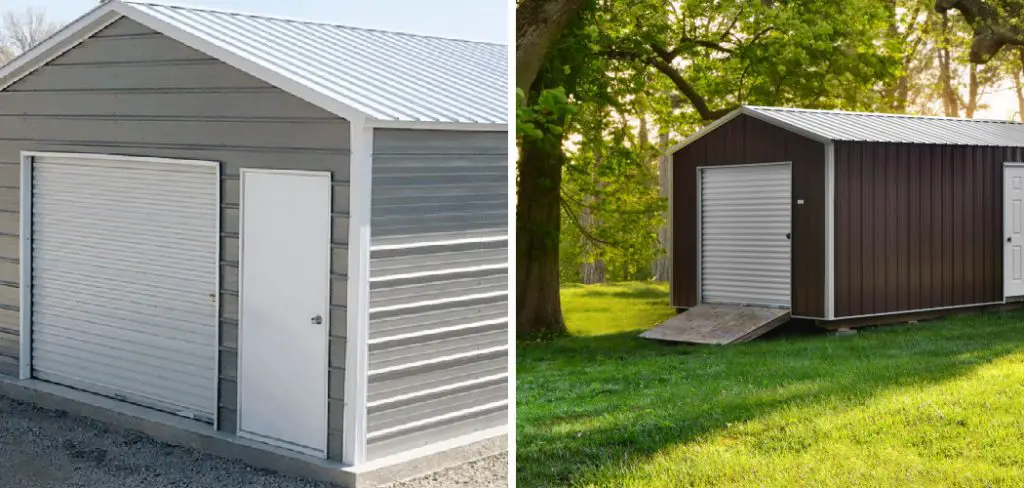
In summer’s sweltering summer heat, a metal shed can quickly transform from a useful storage space or workshop into an unbearably hot tin can.
The challenge of keeping a metal shed cool is paramount for not only ensuring the comfort of those using the space but also for safeguarding any temperature-sensitive items stored within.
Fortunately, through strategic planning and the implementation of effective cooling methods, it is possible to significantly reduce the interior temperature of a metal shed.
This guide on how to keep a metal shed cool will explore a variety of techniques, from simple ventilation improvements to more advanced cooling systems aimed at creating a cooler and more usable space during the hot months.
What are the Benefits of Keeping a Metal Shed Cool?
Before we dive into the various methods for keeping your metal shed cool, let’s first discuss why it’s important to do so. There are several benefits to keeping a metal shed cool, including:
- Improved Comfort: The most obvious benefit of keeping a metal shed cool is improved comfort for those using the space. This is especially important if you plan on spending extended periods of time in the shed, such as using it as a workshop or hobby space. By reducing the temperature inside your metal shed, you can create a more pleasant environment to work or relax in.
- Preservation of Stored Items: Many people use their metal sheds to store various items, from gardening tools to valuable equipment. Extreme heat can damage these items, causing them to degrade or even break. By keeping your metal shed cool, you can help preserve the quality and lifespan of your stored items.
- Energy Savings: If you use electricity to power lights or equipment in your metal shed, keeping it cool can also lead to energy savings. By reducing the interior temperature, you may not need to rely on air conditioning or fans to keep the space comfortable, resulting in lower energy bills.
- Extended Lifespan of the Shed: Extreme and prolonged heat can cause metal sheds to weaken or even warp over time. By implementing cooling methods, you can help extend the lifespan of your shed and prevent costly repairs or replacements down the road.
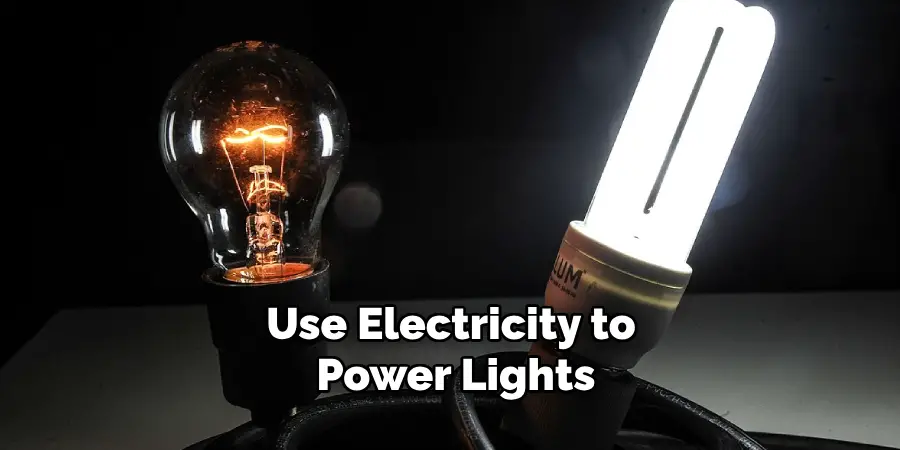
Now that we understand the benefits of keeping a metal shed cool let’s explore some practical ways to achieve this goal.
What Will You Need?
The specific materials and tools you will need to keep your metal shed cool may vary depending on your chosen methods. However, some general items that may be useful include:
- Insulation: For those who want to take a more permanent approach to cooling their metal shed, insulation can help regulate interior temperature by keeping heat out and cool air in.
- Ventilation Tools: Improving the airflow in your metal shed can go a long way in reducing heat buildup. This may include installing windows or vents, using fans, or even just keeping doors open.
- Shade Materials: If your metal shed is exposed to direct sunlight, adding some form of shade can significantly reduce the interior temperature. This could be as simple as placing a large umbrella or canopy over the shed or installing a permanent awning.
- Cooling Systems: If you are willing to invest in a more advanced cooling system, options like air conditioning units or swamp coolers can effectively lower the temperature inside your metal shed.
Once you have gathered the necessary materials, it’s time to start implementing some cooling methods.
10 Easy Steps on How to Keep a Metal Shed Cool
Step 1. Install Reflective Insulation:
Installing reflective insulation is one of the most effective ways to keep your metal shed cool.
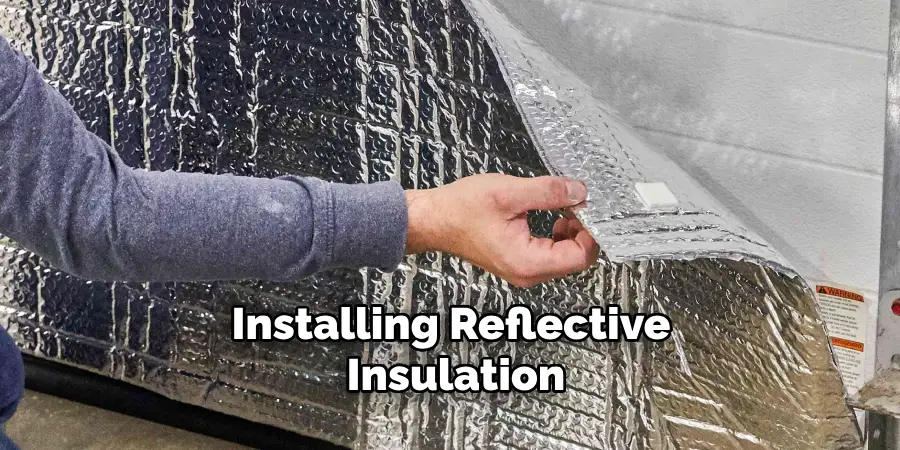
This type of insulation works by reflecting the sun’s radiant heat away from the shed, significantly reducing heat absorption through the metal walls and roof. Reflective insulation can be easily attached to the interior side of your shed’s walls and ceiling, creating a barrier that keeps the interior cooler.
Step 2. Enhance Ventilation:
Improving ventilation within your metal shed can greatly assist in lowering its interior temperature. Consider installing vents at both the highest and lowest points of the shed to facilitate natural air flow. This method allows hot air to escape from the top while drawing cooler air in from the bottom.
Furthermore, adding a few strategically placed fans can help circulate the air more effectively, ensuring a constant flow that prevents heat buildup. Simple measures like keeping doors and windows open when possible will also enhance ventilation, making the shed more comfortable during hot weather.
Step 3. Use a Radiant Barrier Paint:
Applying radiant barrier paint on the exterior of your metal shed is another efficient method to reflect sunlight away and minimize heat absorption. This special type of paint contains reflective properties that can significantly reduce the temperature inside the shed by reflecting the sun’s rays.
It can be applied to the roof and sides of the shed, providing an additional layer of insulation. For the best results, choose a paint specifically designed for metal surfaces and outdoor use to ensure longevity and effectiveness in keeping your shed cool.
Step 4. Install Window Shades or Blinds:
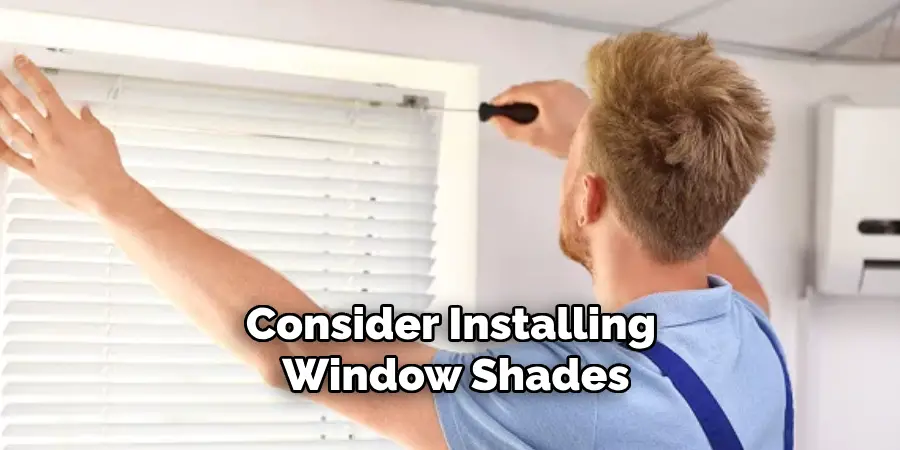
Consider installing window shades or blinds to further reduce the amount of heat entering your metal shed. By controlling the amount of sunlight that penetrates through the windows, you can significantly lower the interior temperature.
This is particularly effective for sheds with large windows or those positioned in direct sunlight for most of the day.
Window treatments not only provide a practical solution for cooling but also add to the aesthetic appeal of your shed’s interior. Opt for reflective materials or light-colored shades to maximize the cooling effect.
Step 5. Plant Trees or Shrubs for Natural Shade:
Creating natural shade is a long-term solution for keeping your metal shed cool.
Planting trees or shrubs around your shed can significantly block direct sunlight, reducing the temperature inside. Choose species that grow well in your local climate and can provide ample shade when mature.
Not only does this method help in cooling your shed, but it also enhances the overall look and feel of your outdoor space. When selecting plants, consider their mature size and root system to avoid any potential damage to the shed’s foundation or structure in the future.
Step 6. Add an Overhang or Awning:
Adding an overhang or awning above doors and windows can relieve the heat by shading your shed’s openings from direct sunlight.

This can be particularly effective during the parts of the day when the sun is at its strongest. An awning reduces the amount of sunlight that enters the shed and protects the entryways from rain, allowing for ventilation even in wet conditions.
There are various materials and designs available, so you can choose one that complements your shed and fits your budget. This addition increases the comfort inside the shed and enhances its exterior appearance.
Step 7. Utilize a Portable Evaporative Cooler:
For areas with low humidity, utilizing a portable evaporative cooler, also known as a swamp cooler, can be an effective way to reduce the temperature inside your metal shed.
These coolers pass outdoor air through water-saturated pads, cooling the air through evaporation before circulating it throughout the space. This method is energy efficient and adds moisture to the air, which can be beneficial in dry climates.
Positioning the cooler near an open window or door can maximize its cooling effect, drawing in the warm air from outside and replacing it with cooler, humidified air inside the shed.
Step 8. Seal Gaps and Leaks:
Ensuring that your metal shed is well-sealed against the elements can significantly contribute to keeping it cool. Gaps and leaks allow hot air to enter and cool air to escape, undermining your cooling efforts.
Inspect your shed for any openings around doors, windows, and where the walls meet the roof. Use weather stripping or caulking to seal these areas effectively.
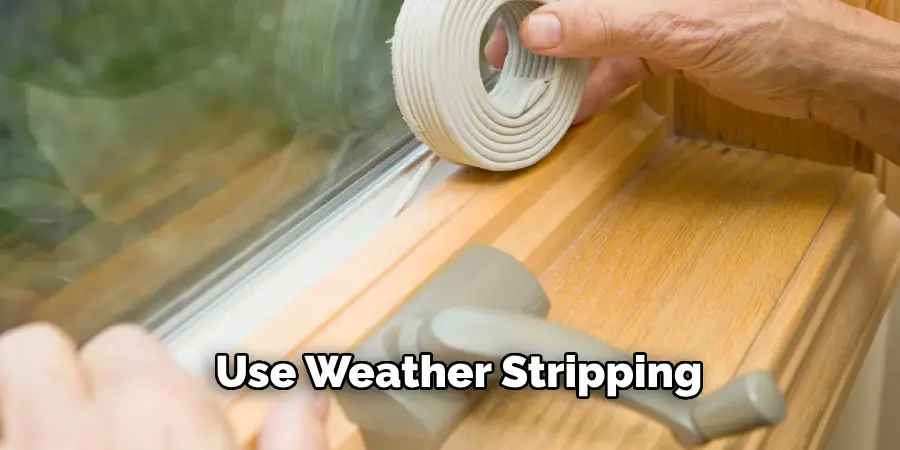
This step helps maintain a cooler environment inside the shed and improves its overall energy efficiency, preventing the wastage of cooled air and reducing the workload on any cooling devices you are using.
Step 9. Consider a Cool Roof Coating:
Applying a cool roof coating to your metal shed can significantly reflect more sunlight and absorb less heat than a standard roof.
Cool roof coatings are made with highly reflective paints, gravel, and sheets that reflect more sunlight and cool faster at night. This type of coating is especially beneficial for sheds in areas exposed to intense sun and can lead to considerable reductions in interior temperature.
When selecting a cool roof coating, opt for products that are compatible with metal surfaces and designed for durability against weather elements. This step not only aids in keeping your shed cooler but also contributes to lowering cooling costs and extending the life of your shed’s roof.
Step 10. Install an Insulation Kit:
To further enhance the cooling efficiency of your metal shed, consider installing an insulation kit.

Insulation can help maintain a stable temperature inside the shed by reducing the heat transfer through the shed’s walls and roof. There are insulation kits available that are specifically designed for metal buildings, including reflective foil insulation or fiberglass batts.
These materials work by reflecting heat away or by trapping air to reduce heat conduction. When installing insulation, pay special attention to covering all areas evenly, including the walls, ceiling, and doors, to maximize the effectiveness of your cooling strategies.
This step keeps your shed cooler during hot summer days and improves its usability year-round by providing additional warmth in the winter.
By following these steps, you can effectively cool down your metal shed and create a comfortable environment for storage, work, or leisure.
5 Additional Tips and Tricks
Tip 1. Use Reflective Insulation: Consider lining the interior walls and roof of your metal shed with reflective insulation materials. These materials prevent heat absorption and reflect it away from your shed, significantly reducing the interior temperature during hot weather.
Tip 2. Install Vents for Improved Air Flow: Enhancing the air flow inside your metal shed can significantly improve its cooling ability. Consider installing vents or fans, which allow hot air to escape and let in cooler outside air.
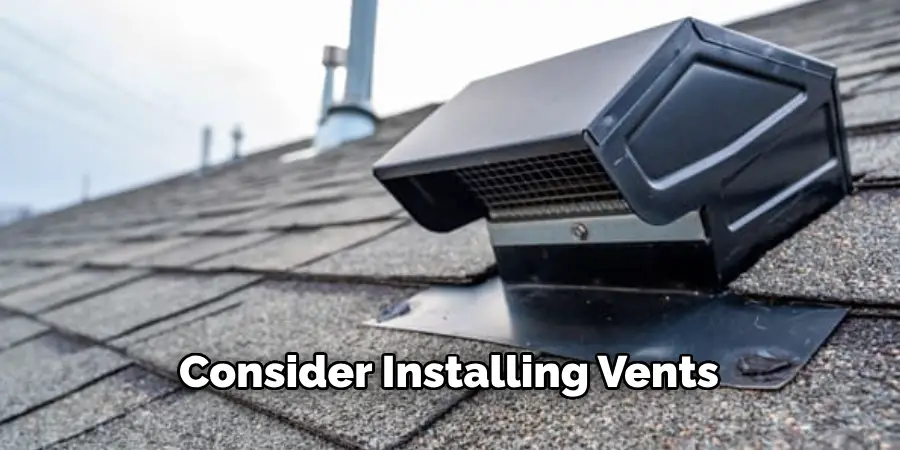
Tip 3. Use Light-Colored Paint: Painting the exterior of your metal shed with light colors, such as white or light gray, can help reflect sunlight away from your shed and keep it cooler. Additionally, light colors absorb less heat and can help maintain a comfortable temperature inside the shed.
Tip 4. Utilize Natural Nighttime Cooling: Take advantage of natural nighttime cooling by opening windows and doors to allow cool air to circulate through your shed. This can be especially effective in areas with lower humidity levels.
Tip 5. Use Portable Shade Covers: If you need to use your metal shed during the day, consider installing portable shade covers outside the shed. These can provide relief from direct sunlight and significantly reduce the heat entering your shed.
By implementing these additional tips and tricks, you can further improve the cooling efficiency of your metal shed and make it a more comfortable space throughout the year.
5 Things You Should Avoid When Trying to Keep a Metal Shed Cool
- Ignoring Insulation: Failing to insulate your metal shed properly can lead to significant heat accumulation inside. Insulation is a critical step in maintaining a cooler internal environment, and skipping this step can negate other cooling efforts.
- Using Dark Exterior Paints: Dark colors absorb more sunlight, causing the temperature inside your metal shed to rise. Opting for dark exterior paints can make it significantly harder to keep the shed cool, especially during peak summer months.
- Blocking Natural Ventilation: It’s essential to maintain good airflow within your metal shed to help disperse heat. The shed can block natural ventilation paths by placing objects near vents or overcrowding, trapping hot air inside.
- Overlooking Air Leaks: Allowing air to leak through gaps and cracks can undermine your cooling efforts by letting hot air in and cool air out. Ensure that all potential air leaks are adequately sealed to maintain a cooler interior.
- Neglecting Maintenance of Cooling Equipment: If you’re using evaporative coolers, fans, or air conditioners to cool your shed, regular maintenance is crucial. Neglecting to clean or service these devices can lead to poor performance, higher energy consumption, and inadequate cooling.
Avoiding these common mistakes can significantly enhance the effectiveness of your cooling strategies, making your metal shed a more comfortable and usable space throughout the hot summer months.
How to Put AC in a Shed?
Installing air conditioning in a metal shed can be a bit more challenging than installing it in a traditional building. Here are the steps to follow to successfully add AC to your shed:
- Check the Electrical Capacity: Before installing an air conditioner, ensure that your shed’s electrical capacity can handle its power requirements. Consult with an electrician if necessary.
- Choose the Right AC Unit: Opt for a window or wall-mounted air conditioner that is designed for small spaces, such as a shed. These units are typically compact and have lower power requirements, making them ideal for use in metal sheds.
- Install a Window or Opening: If your shed has no existing window or opening, create one to accommodate the AC unit’s installation.
- Seal the Window/Opening: Properly seal the window or opening to ensure that air doesn’t leak in or out, undermining the AC’s effectiveness.
- Install the Air Conditioner: Carefully follow the manufacturer’s instructions for installing and securing your chosen AC unit.
- Consider Additional Cooling Strategies: Adding insulation, reflective materials, or fans to your shed can further enhance the cooling efficiency of your newly installed air conditioning unit.
By following these steps, you can successfully add AC to your metal shed and significantly improve its comfort level during hot weather.
Why Do Metal Sheds Get Hot?
Metal sheds are more prone to heat accumulation compared to other building materials due to their composition and lack of insulation. Here are some reasons why metal sheds tend to get hot:
- Heat Absorption: Metal is an excellent conductor of heat, meaning it absorbs heat quickly and retains it for longer periods. This characteristic causes the temperature inside a metal shed to rise significantly, making it hotter than the surrounding environment.
- Lack of Insulation: Unlike wooden or brick structures, metal sheds often lack proper insulation. Heat can easily transfer through the walls and roof without insulation, raising the interior temperature.
- Limited Ventilation: Most metal sheds have limited ventilation options, typically only small vents or windows. This lack of airflow can trap hot air inside, leading to heat build-up.
- Exposure to Sunlight: Metal sheds are typically placed in open areas with direct exposure to sunlight. This means they absorb more heat from the sun’s rays than buildings surrounded by trees or other structures.
While metal sheds may get hot due to these factors, proper cooling strategies can effectively counteract their effects and make the interior space more comfortable.
Conclusion
In conclusion, how to keep a metal shed cool involves a multifaceted approach that combines proper insulation, ventilation, shading, and the use of cooling equipment.
You can significantly reduce the heat accumulation inside your metal shed by installing reflective materials, ensuring adequate airflow, utilizing natural and artificial cooling methods, and avoiding common pitfalls such as neglecting insulation or using dark exterior paints.
Additionally, installing an air conditioning unit, while more complex, offers a direct and effective way to control the shed’s temperature. Remember, the key to a cooler metal shed is prevention, maintenance, and adopting a proactive stance toward cooling strategies.
With these measures in place, your metal shed can become a comfortable, functional space even during the warmest months of the year.
I am Rick. I grew up helping my dad with his handyman service. I learned a lot from him about how to fix things, and also about how to work hard and take care of business. These days, I’m still into fixing things- only now, I’m doing it for a living.
I’m always looking for new ways to help people grow and develop. That’s why I have created this blog to share all my experience and knowledge so
that I can help people who are interested in DIY repair.

